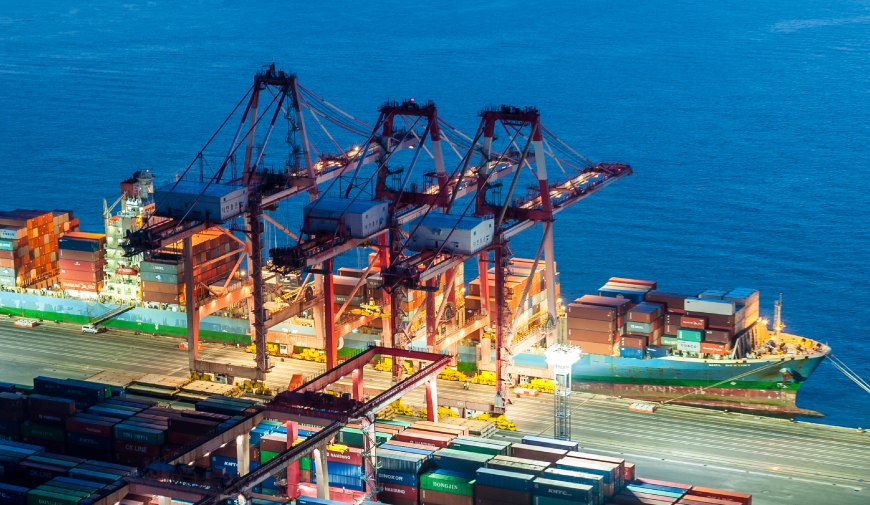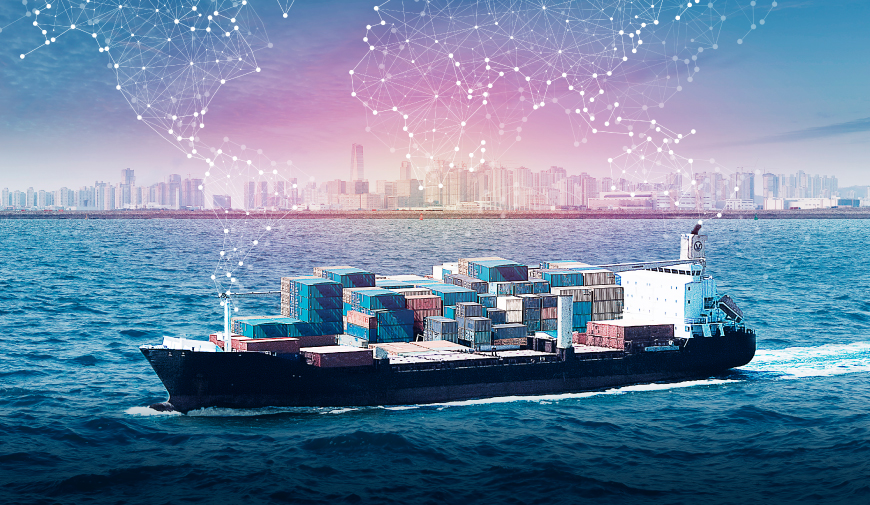Korea's shipbuilding industry, which mainly receives orders for high-value-added ships, is touted for the world-class technological competitiveness. The country's global order share of LNG carriers has reached 75% and that of large and eco-friendly ships maintains No.1 title, taking initiative in the high-value-added vessel market. Meanwhile, with the global decarbonization policy underway, no later than 2023 ships are subject to the Energy Efficiency Existing Ship Index (EEXI) and Carbon Intensity Indicator (CII), which are environmental regulations of the International Maritime Organization (IMO). Accordingly, ships that do not meet the EEXI and CII are required to pay penalties related to limited engine power and operation under restriction. As penalties hinder the economic efficiency of ships, the early scrapping of aged ships is projected to be vitalized. And due to the effect of environmental regulations, it is expected that diversion demands for eco-friendly ships go into full swing.
Diversion to Eco-friendly Ship, an Opportunity for Korean Shipbuilding with Top-notch Technology
The shipbuilding market analysis institute, Clarksons Research, forecasts that a stable order market with an annual average of 40 million CGT or more would be formed by 2030 driven by an increase in throughput and demand for diversion to eco-friendly ships. On top of that, orders for not only LNG carriers and methanol-powered ships but carbon-free ammonia-powered ships are likely to jump for the long haul. The ship fuel diversion has already surfaced in the market. Of the 2022 contracts, the ratio of vessels with alternative fuels (option included) marked a record-high of 42 percent. While LNG is widely known as alternative fuel ship, we cannot ignore the significant number of contracts that include Ammonia Methanol Ready, a retrofit option that can be later diverted to either methanol-powered ships or ammonia/methanol engines. The Korean shipbuilding industry, one-step ahead of China and Japan, has won many orders for green high-value-added vessels to maintain competitiveness. In terms of LNG, the industry is already at the world's top level, and Hyundai Heavy Industries is seeing results as evidenced by winning the orders for 19 methanol-powered ships from the Danish shipping company Maersk. Also, Korea has secured a great deal of the Ammonia Methanol Ready ship orders and therefore, the country, backed by the technological competitiveness, seeks new opportunities in the changing market on environmental regulations.
Strategy to Secure Market Dominance through Super-gap Beyond No.1
Ships, a traditional export item, are under a system in which shipping companies place an order with shipbuilders. Most of the demand comes from overseas shipping companies and most of production prices come from exports. Shipbuilding is an industry of high foreign exchange earning rates and is recognized as one of key national industries along with defense industry. Against this background, the Korean government considers the current times—with a better market condition beyond the protracted economic slump—a high time in which the Korean shipbuilding industry with competitiveness will be able to create the super gap by enhancing competitiveness. Such thoughts led Seoul to announce a strategy to maintain the super gap in the industry on Oct. 19, 2022. Through the strategy, Korea set expected effects including the achievement of a 75% share of high-value-added ships by 2030, the commercialization of autonomous ships and zero-carbon ships, and the achievement of a 90% localization of eco-friendly ship equipment and materials.
Growing demands for eco-friendly ships led by the carbon-neutral trend factors in new opportunities, but also poses a danger in that competition with China in high-value-added ships may get fierce, and the rivalry of technology development and standardization with the EU, Japan and other advanced countries over future technologies such as carbonless autonomous ships could become tougher. Accordingly, the government is slated to pursue localization of main equipment and materials highly reliant on foreign markets, such as cargo tanks to maintain the super gap in LNG carriers. At the same time, it will cope with the IMO environmental regulations and plans to invest in attaining the carbon-free ship’s core technology as well as other technologies such as on-board CO2 capturing and storing technology, which reduces carbon emissions from ships and rotor sails that upgrade ship efficiency to secure preemptive technology.
Strategy to Secure Super Gap in Shipbuilding
Strategy to Secure Super Gap in Shipbuilding
| Task |
Specific Goals
(focused on eco-friendly & decarbonization) |
| Securing leadership in the future ship market |
ㆍ Localization of LNG ship equipment and materials, and early securing of key technology for carbonless ship
ㆍ Verification of autonomous ships and enactment of relevant laws
ㆍ Building Smart Yard to enhance productivity and safety
ㆍ Expansion of new market entry to respond to future volatility |
| Expansion of workforce in production and technology |
ㆍ Expansion of the period of using the special extended work system and improvement of usability
ㆍ Improvement of employing foreign workforce
ㆍ Support training workers in production and professionals |
| Bolstering export competitiveness |
ㆍ Financial support to secure contracts when market is recovering
ㆍ Reinforcement of co-prosperity cooperation for shared growth of upstream and downstream
ㆍ Elevating export competitiveness in small- and mid-sized shipbuilders and industry of equipment and materials |
※ Source: “Strategy to secure a super gap in the shipbuilding industry” (2022, in cooperation with relevant ministries)
Meanwhile, the Korean shipbuilding industry needs to expand workforce since the number of design and production workers in the industry has fallen due to long-term restructuring. Thus, the government is to pursue workforce securing policies such as employing foreign laborers, and to invest KRW 280 billion in developing and providing Smart Yard technology to address labor shortage through digital transition, and ratchet up productivity and realize safe working environments.
Promising Sectors in Shipbuilding Industry
Promising Sectors in Shipbuilding Industry
| Type |
Floating offshore wind power substructure |
Fixed offshore wind power installation vessel |
Offshore platform + CO2 carrier |
|
 |
| Orders by 2021 |
121MW |
88 ships (8 for KOR, 74 for CHN) |
3 ships (2 for CHN, 1 for JPN) |
| Order prospects |
(By 2030) 18.9 GW, KRW 23 tln |
(By 2028) additional orders for 103 ships |
(By 2050) 1,520 ships |
※ Source: “Strategy to secure a super gap in the shipbuilding industry” (2022, in cooperation with relevant ministries)
In line with the shipbuilding industry's characteristic of high order volatility, the government also supports business diversification. It also backs other projects: the remodeling project of Floating Storage Re-Gasification Unit (FSRU) using aged LNG tankers, the maintenance project for special ships, and development of technology to enter the off-shore wind power, a swelling market due to carbon-neutrality. Other than that, the government plans to support the development of offshore platforms (water electrolysis, etc.) and CO2 carriers, which are projected to have increasing demands as a means of transitioning toward carbon neutrality so that Korea's shipbuilding industry, in the everchanging future market, secures a super gap technology and takes another leap forward, beyond No.1 spot.
By Seung-hwan Oh (osh@kiet.re.kr)
Korea Institute for Industrial Economics and Trade
* The opinions expressed in this article are the author’s own and do not reflect the views of KOTRA.













